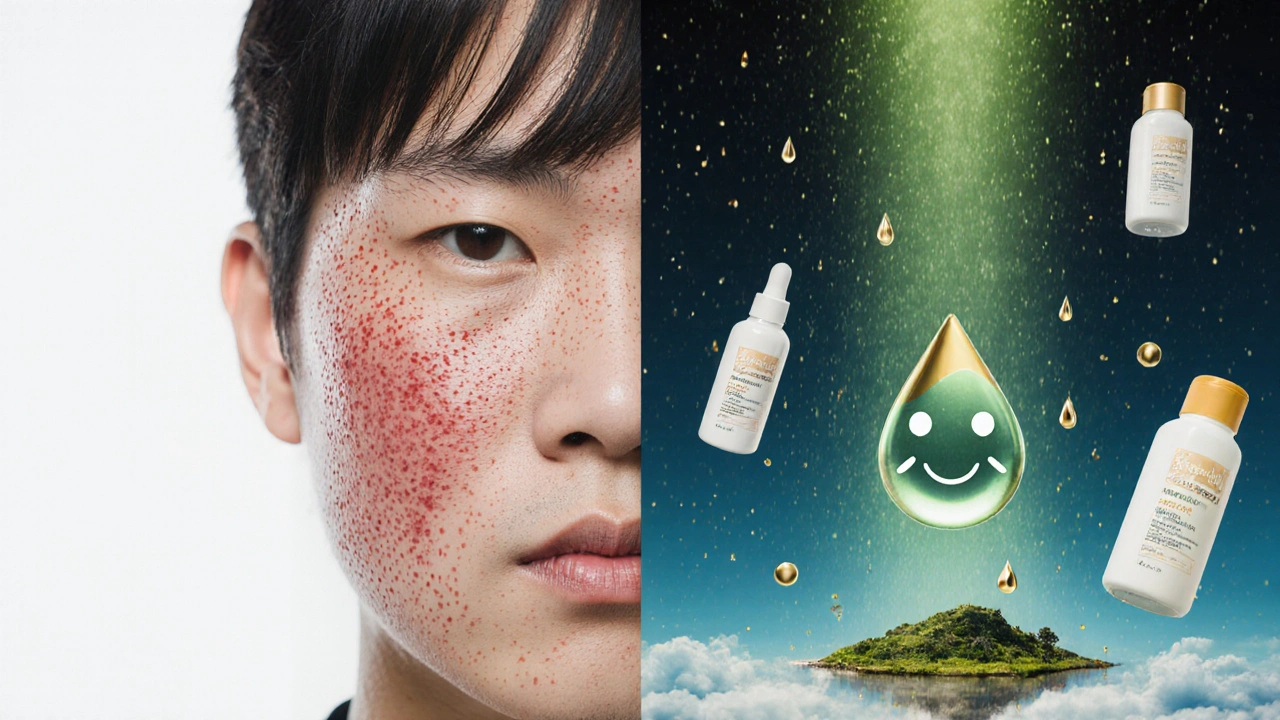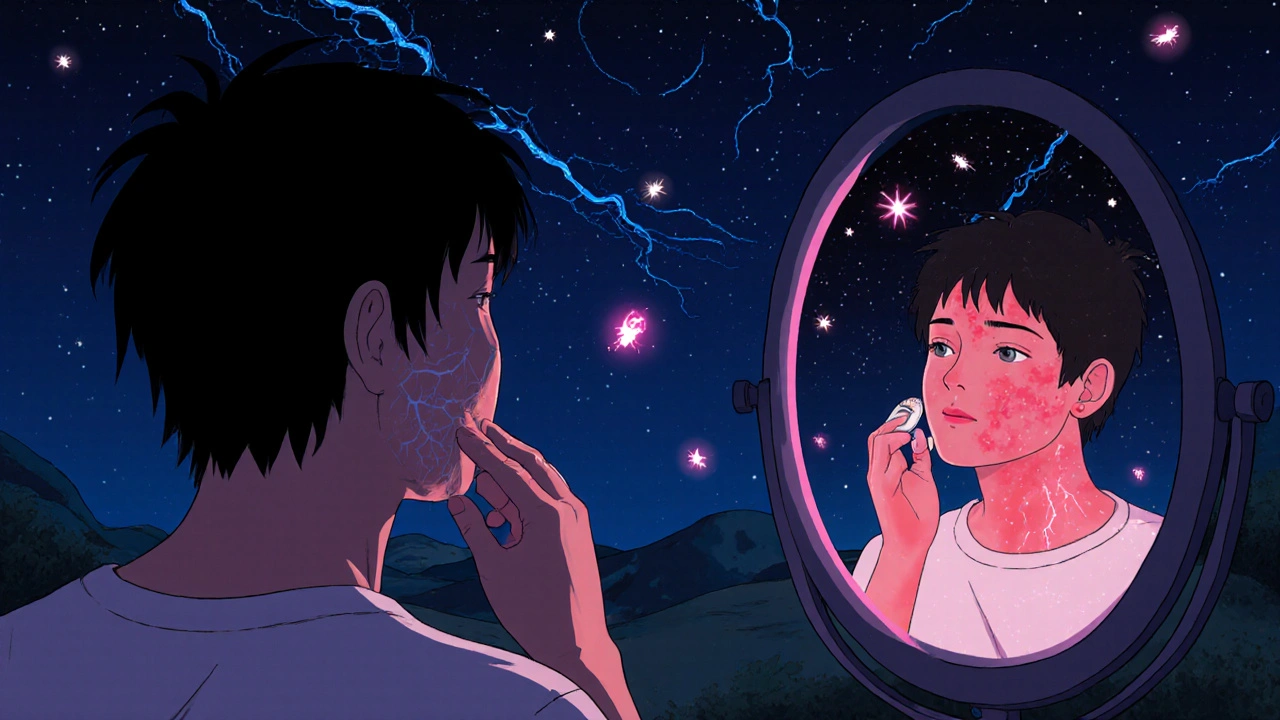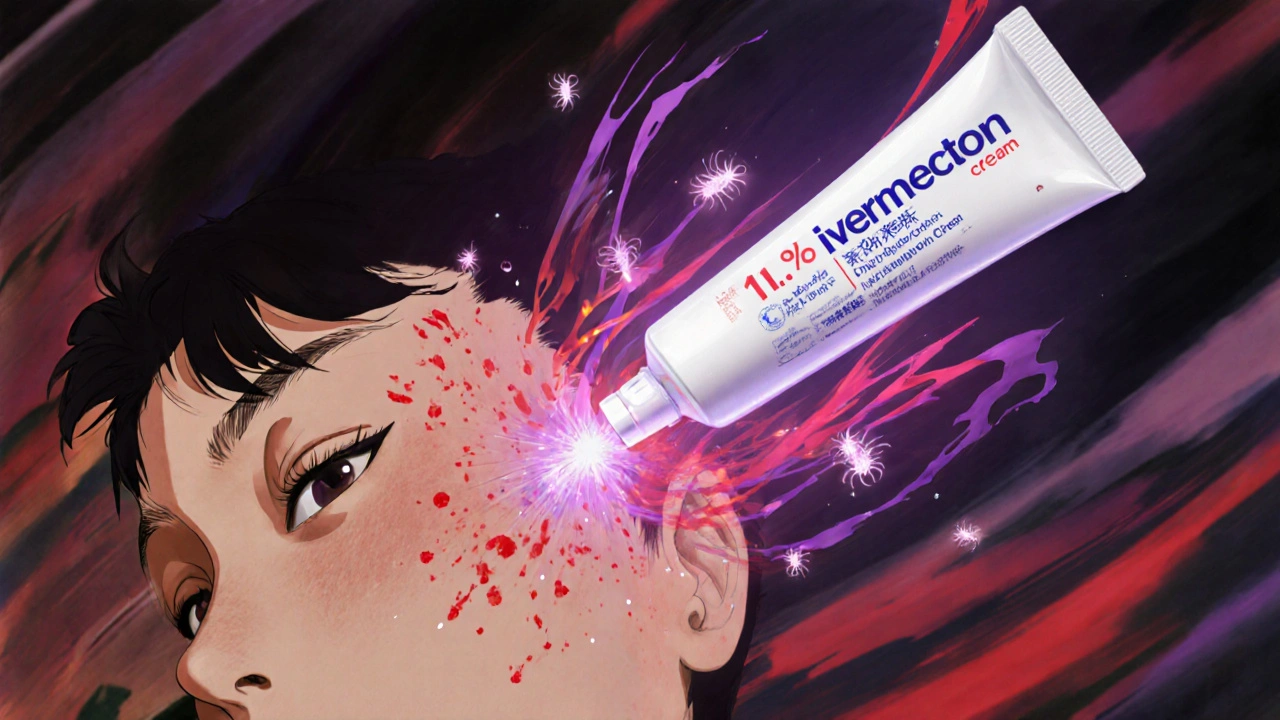Rosacea Treatment Selector
Find Your Best Treatment
Answer these questions to get personalized recommendations for your rosacea treatment.
How It Works
This tool uses the latest clinical evidence from the article to recommend the most appropriate treatment for your specific situation. It considers your symptoms, budget, and priorities to guide you toward the best option.
Key Factors
- Fast Results Soolantra (12 weeks), Oral antibiotics (2-4 weeks)
- Gentle Options Azelaic acid, Metronidazole
- Cost-Effective Metronidazole ($30), Azelaic acid ($40-50)
- For Redness Azelaic acid, Brimonidine
If you’ve been struggling with persistent redness, bumps, or burning on your face, you’ve probably heard of Soolantra. It’s one of the few prescription creams specifically approved for rosacea, and its active ingredient-ivermectin-has helped thousands of people get relief. But it’s not cheap, and it’s not the only option out there. So, how does Soolantra really stack up against other treatments? And is there something better, cheaper, or gentler for your skin?
What is Soolantra, really?
Soolantra is a 1% topical cream containing ivermectin. It’s not an antiparasitic in the way oral ivermectin is used for worms. Instead, it works on the inflammation and Demodex mites that are linked to papulopustular rosacea. Clinical trials showed that about 40% of users saw clear or almost clear skin after 12 weeks of daily use. That’s not a cure, but it’s meaningful improvement for people who’ve tried everything else.
The cream is applied once a day, usually to the entire face. It’s gentle enough for daily use, and most people don’t get serious side effects. A few report mild stinging or dryness, but it’s rarely enough to stop treatment. The real downside? Cost. In New Zealand, a 30g tube can run over $120 without subsidy. That’s why many people start looking for alternatives.
Metronidazole: The OG Rosacea Treatment
Before Soolantra came along, metronidazole was the gold standard. Available as a gel, cream, or lotion, it’s been used for decades. Brands like Rosadan and MetroGel are common. It works by reducing inflammation and killing bacteria on the skin. It’s not as targeted as ivermectin against Demodex mites, but it still works for many.
In head-to-head studies, Soolantra outperformed metronidazole in reducing inflammatory lesions. One 2017 trial found that 75% of Soolantra users saw a 75% reduction in bumps and pimples, compared to 54% on metronidazole. But here’s the catch: metronidazole costs about $30 for a 60g tube. That’s less than a third of Soolantra’s price. For someone on a budget or with mild rosacea, it’s still a solid first choice.
Also, metronidazole takes longer to work. You might not see results until 6-8 weeks. Soolantra often shows improvement by week 4. If you’re looking for faster results, Soolantra wins. If you’re looking for affordability and long-term use, metronidazole still holds up.
Azelaic Acid: The Gentle Powerhouse
Azelaic acid, sold as Finacea or Skinoren, is another first-line treatment. It’s a naturally occurring acid found in grains. In concentrations of 15% or 20%, it reduces redness, kills bacteria, and gently exfoliates. It’s also safe during pregnancy, which makes it a top pick for women who can’t use other options.
Studies show azelaic acid is about as effective as metronidazole, but slightly less potent than Soolantra for reducing inflammatory lesions. However, it’s excellent for persistent redness and post-inflammatory hyperpigmentation-something Soolantra doesn’t handle as well. Many users report less burning and stinging with azelaic acid than with Soolantra.
Price-wise, it’s similar to metronidazole. A 60g tube costs around $40-$50. It’s also available over the counter in lower strengths (10%), which some people use for maintenance. If your main issue is flushing and lingering redness rather than pus-filled bumps, azelaic acid might be your best bet.

Oral Antibiotics: When Topicals Aren’t Enough
If your rosacea is more widespread or severe, your doctor might suggest oral antibiotics. Doxycycline is the most common. It’s not used as an antibiotic at the low doses prescribed for rosacea (usually 40mg delayed-release). Instead, it’s used for its anti-inflammatory effects.
Oral doxycycline works faster than topicals-many see improvement in 2-4 weeks. But it’s not a long-term solution. Long-term use can lead to gut issues, yeast overgrowth, or antibiotic resistance. It’s often used as a bridge: get things under control with pills, then switch to a topical to maintain results.
Soolantra doesn’t replace oral antibiotics. It complements them. Some patients use doxycycline for 6-8 weeks, then switch to Soolantra. Others use both together for stubborn cases. The combination can be powerful, but it’s not for everyone. You need to weigh the benefits against the risk of side effects.
Brimonidine and Oxymetazoline: The Redness Fix
These aren’t treatments for bumps or pimples. They’re vasoconstrictors-meaning they shrink blood vessels to reduce redness. Mirvaso (brimonidine) and Rhofade (oxymetazoline) are both topical gels that give quick, temporary relief. You’ll see results in 30 minutes, and they last 8-12 hours.
They’re great for special occasions. A wedding, job interview, or public speaking event? Apply one of these and your face looks calmer. But they don’t treat the root cause. If you stop using them, your redness comes back-sometimes worse than before (a rebound effect).
Soolantra, azelaic acid, and metronidazole fix the underlying problem. Brimonidine and oxymetazoline just mask the symptom. They’re not alternatives to Soolantra-they’re add-ons. Using them together can give you both long-term control and short-term confidence boosts.
What About Natural Options?
People often ask about tea tree oil, aloe vera, green tea extracts, or niacinamide. These aren’t FDA-approved for rosacea, but some studies show promise. A 2018 trial found that a 5% tea tree oil eyelid wash reduced Demodex mites in patients with ocular rosacea. Another study showed niacinamide (vitamin B3) helped reduce redness and improve skin barrier function.
But here’s the problem: natural doesn’t mean safe or consistent. Tea tree oil can irritate sensitive skin. Aloe vera might feel soothing but won’t reduce bumps. Niacinamide is gentle, but you’d need to use a 4%+ concentration daily for months to see results. It’s not a replacement for Soolantra if you have moderate to severe papulopustular rosacea.
Think of natural options as supportive tools-not replacements. Use them alongside your prescription, not instead of it. And always patch-test first. What soothes one person can flare up another.

Which One Should You Choose?
There’s no single best treatment. It depends on your symptoms, budget, and lifestyle.
- If you have lots of bumps and pimples and want the fastest, most effective result: Soolantra is your top pick.
- If you’re on a tight budget and have mild to moderate symptoms: metronidazole still works well.
- If your main issue is redness and flushing, or you’re pregnant: azelaic acid is your friend.
- If your rosacea is severe or spreading: talk to your doctor about oral doxycycline as a short-term option.
- If you need quick redness relief for events: brimonidine or oxymetazoline can help-but don’t rely on them long-term.
Many people end up using a combination. For example: azelaic acid in the morning, Soolantra at night, and oxymetazoline before a big meeting. That’s not unusual. Rosacea is complex, and treating it often requires a layered approach.
What If Soolantra Doesn’t Work?
It happens. About 1 in 3 people don’t respond well to ivermectin. If you’ve used Soolantra for 12 weeks and see no change, it’s time to reassess.
First, check your application. Are you using it every day? Are you applying it to the whole face, not just the spots? Rosacea isn’t localized-it’s a condition of the skin’s immune response.
Second, consider triggers. Alcohol, spicy food, hot showers, stress, and sun exposure can sabotage even the best treatment. Keep a daily log for two weeks. You might spot patterns you hadn’t noticed.
Third, talk to your dermatologist. You might have another condition-like seborrheic dermatitis or lupus-that looks like rosacea. Or your Demodex mite load might be too high for topical ivermectin alone. In rare cases, oral ivermectin (off-label) is used, but only under strict supervision.
Final Thoughts
Soolantra is a powerful tool, but it’s not the only one. It’s not even the cheapest. What makes it stand out is how consistently it works for inflammatory rosacea. If your skin responds, it can change your life. But if it doesn’t, or if you can’t afford it, there are other paths.
Don’t feel like you’ve failed if Soolantra doesn’t work for you. Rosacea treatment is personal. It’s trial, error, and patience. The goal isn’t perfection-it’s control. And with the right mix of treatments, most people can get there.
Is Soolantra better than metronidazole for rosacea?
Yes, in most cases. Clinical studies show Soolantra reduces inflammatory lesions faster and more effectively than metronidazole. About 75% of users see major improvement with Soolantra, compared to 54% with metronidazole. But metronidazole is much cheaper and still effective for mild cases.
Can I use azelaic acid and Soolantra together?
Yes, many people do. Azelaic acid helps with redness and skin texture, while Soolantra targets bumps and mites. Use azelaic acid in the morning and Soolantra at night. Wait 30 minutes between products to avoid irritation. Always patch-test first if you have sensitive skin.
Does Soolantra kill Demodex mites?
Yes. Soolantra’s active ingredient, ivermectin, reduces the number of Demodex mites on the skin. These mites are linked to inflammation in rosacea. Studies show a significant drop in mite counts after 4-12 weeks of use, which helps calm flare-ups.
How long does it take for Soolantra to work?
Most people see improvement in 2-4 weeks, with full results by 12 weeks. Some notice less redness and fewer bumps within days, but it takes time to clear the underlying inflammation. Don’t stop using it early-even if you feel better.
Are there any side effects of Soolantra?
Side effects are usually mild: dry skin, burning, or itching at the application site. Less than 5% of users stop treatment because of them. Unlike some acne treatments, Soolantra doesn’t cause peeling or extreme sensitivity. It’s one of the gentlest options for long-term use.

